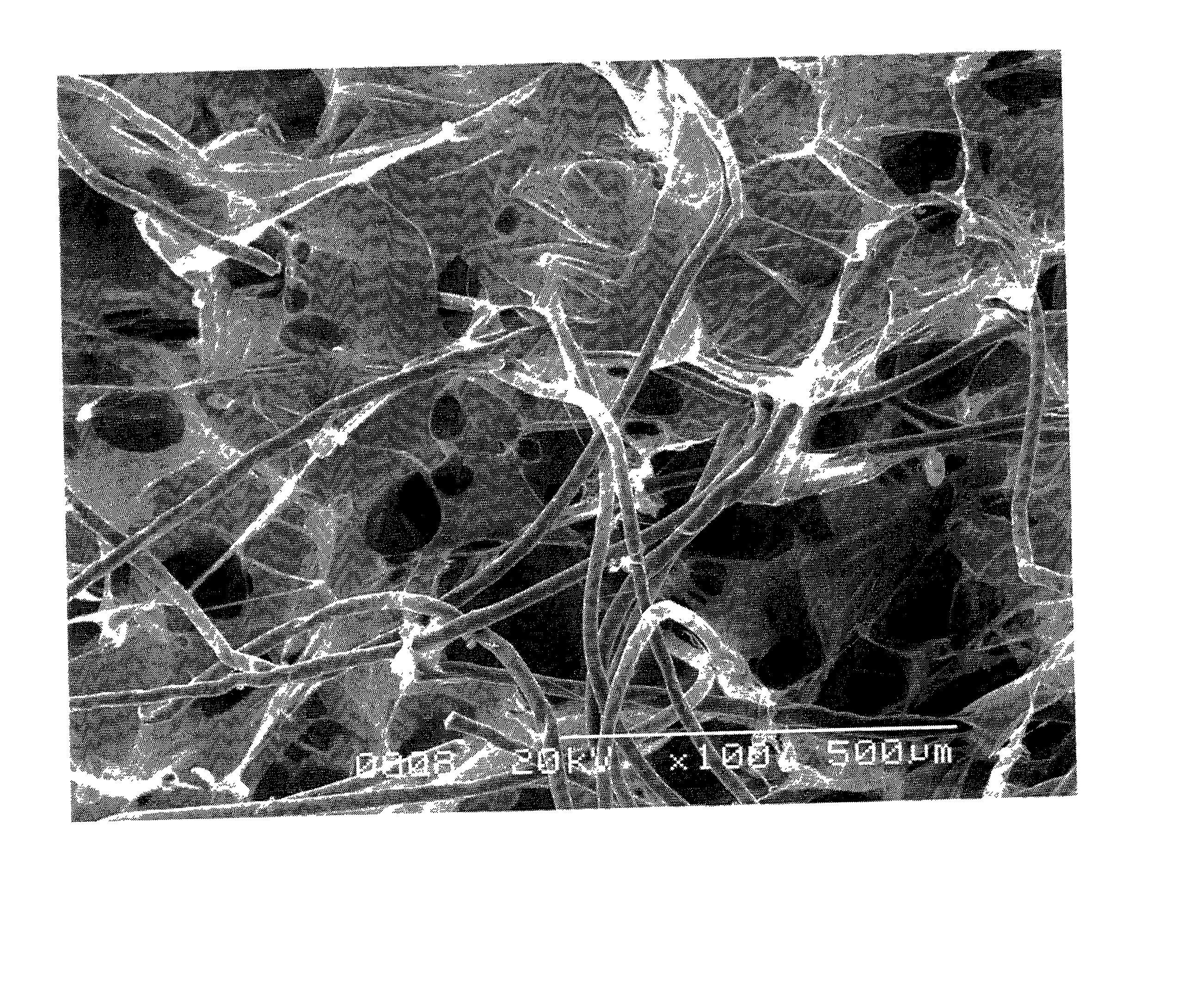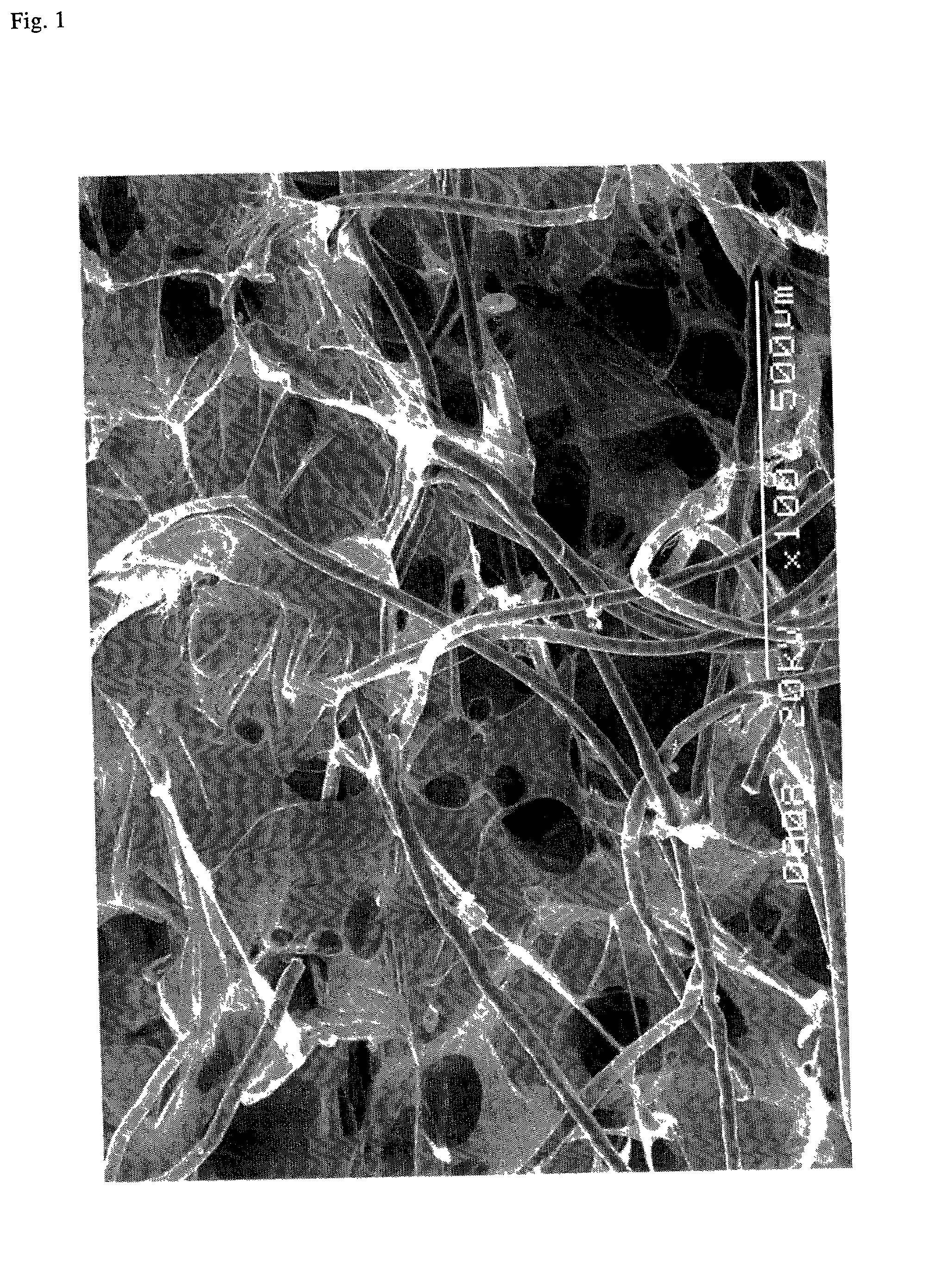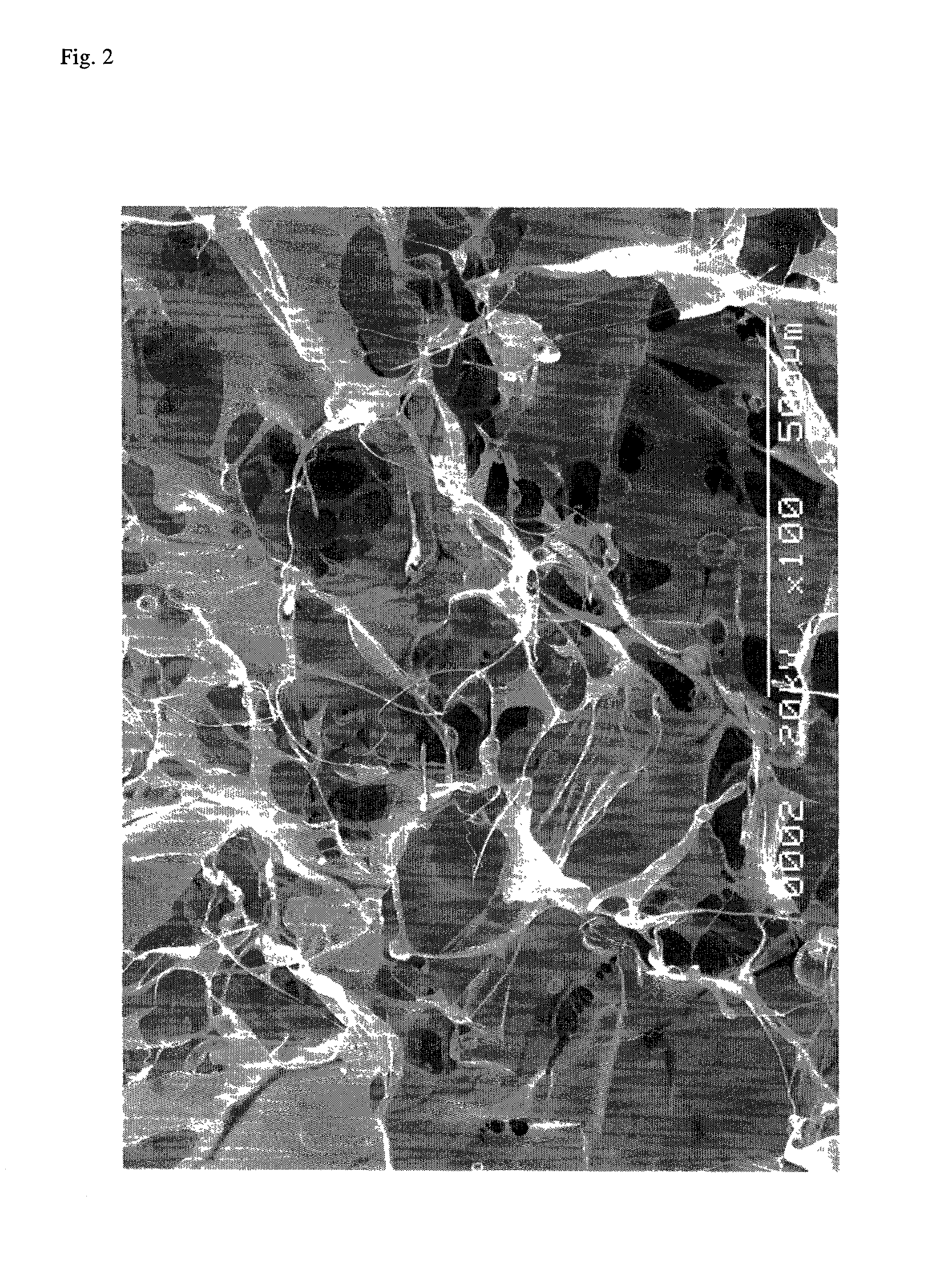Hybrid material for regeneration of living body tissue
a living body tissue and hybrid technology, applied in the direction of prosthesis, bandages, weaving, etc., can solve the problems of low mechanical strength, inability to maintain the shape of the body, inferior affinity with cells to collagen, etc., to achieve moderate biodegradation absorbability, excellent affinity with cells, and sufficient mechanical strength
- Summary
- Abstract
- Description
- Claims
- Application Information
AI Technical Summary
Benefits of technology
Problems solved by technology
Method used
Image
Examples
examples 2 to 4
[0030] A hybrid material, according to the present invention, was obtained in the same way as of Example 1 except that the weight of the nonwoven fabric including the poly(glycolic acid) was each changed to 6 mg in Example 2, 12 mg in Example 3, and 24 mg in Example 4.
example 5
[0062] An amount of 1.5 mg of nonwoven fabric including poly(glycolic acid) was cut off and uniformly disentangled with a pincette to make it fibrous, and then put in a 24-well plate (coaster 3526, Corning, N.Y.). Next, 0.75 g of 0.3 weight % type-I collagen solution derived from pig skins was added to the aforementioned 24-well plate. Subsequently, the content of the above 24-well plate was frozen at -80.degree. C. for 12 hours, and thereafter freeze-dried under vacuum of lower than 0.1 torr for 24 hours. Thereafter, the resultant dried product was heat-dehydration-crosslinked at 140.degree. C. under vacuum of lower than 0.1 torr for 12 hours, thus obtaining a hybrid material according to the present invention, in which the ratio of poyl(glycolic acid) / collagen was 0.67 (weight ratio).
examples 6 to 8
[0063] A hybrid material, according to the present invention, was obtained in the same way as of Example 5 except that the weight of the nonwoven fabric including the poly(glycolic acid) was each changed to 3 mg in Example 6, 6 mg in Example 7, and 12 mg in Example 8.
PUM
| Property | Measurement | Unit |
|---|---|---|
| diameters | aaaaa | aaaaa |
| pressure | aaaaa | aaaaa |
| weight ratio | aaaaa | aaaaa |
Abstract
Description
Claims
Application Information
 Login to View More
Login to View More - R&D
- Intellectual Property
- Life Sciences
- Materials
- Tech Scout
- Unparalleled Data Quality
- Higher Quality Content
- 60% Fewer Hallucinations
Browse by: Latest US Patents, China's latest patents, Technical Efficacy Thesaurus, Application Domain, Technology Topic, Popular Technical Reports.
© 2025 PatSnap. All rights reserved.Legal|Privacy policy|Modern Slavery Act Transparency Statement|Sitemap|About US| Contact US: help@patsnap.com



